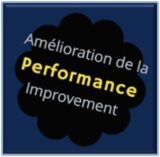Services
Diagnosis
We provide two distinct types of diagnosis: “Organizational” and Functional.
The organizational diagnosis has a broader scope and can be more in dept in order to provide a larger picture of the entire organization. It can also be a summary or a full diagnosis, including: benchmarks, value and non-value added activities, tables representing the observations (facts) and recommendations, corporate governance issues and organizational development recommendations…
The functional diagnosis is more focused on a single function (like training, maintenance, HR…) or can include other functions that are directly linked to the primary function being diagnosed. For example you want to implement a training plan in maintenance in order to lower costs and down times. Therefore you need to know the impacts to operations, HR, Training, Maintenance, Logistics and others.


Competence profiles and development
Competences are often mistaken with skills. A Skill is only one part of a competence, the other components are Knowledge, Behaviour and the Context in which the competence is applied.
Further more, in many cases, employees are sent to courses and those are recorded as competences even if those courses are more often information and not training.
In short, a competence profile is the sum of the detailed competences required for a position, in other words what is required to meet the objectives and responsabilities enumerated in the job description.
Our competence approach is intended to save many hours of non-value added training while maximizing the time spent in training. It is a hands-on approach and an extremely precise way of training your employees on the right stuff rather than wasting time sending them on “courses“.
It is a method to train employees on what they need to be able to do rather than “teaching” them how to do something.
All competences must be observable and mesurable with the use an observation grid. This same grid can help you save thousands of hours of training when the Competency Based Approach is used correctly.
“For example in a plant of 1,500 employees, where I implemented a full competence approach, the company saved $400,000 of recurring and regulatory training a year. So the cost of implementation is paid by itself.
Management of training and overall Training plan
How to manage training efficiently takes experience, rigour and adherence to a detailed but simple to follow training policy.
You need to take into account Change management at all levels.
There’s a new generation of youngsters who were born with a PC or a Smartphone in their hands, who prefer their social activities more than their work schedule. You need to adapt your training to that new generation, if you try to make them change, you will likely fail.
So think about new ways to train your employees, be creative, use blended learning, e-learning when possible and hands-on training with a proper structured training grid… don’t just send new employees on the floor without a guide to be followed by them and their coach/trainer.
“The same applies when managing your employees, you cannot manage the same way of managing the new generation like you used to do in the past, you need to adapt to this new generation, not the other way around”.
Your training plan should consist of two things:
- General training
General training like regulatory training, HSE, compliance, etc. is easier to plan but requires more training hours and budget since it applies to the majority of your workforce.
- Specific training
Specific job training will require less hours but is trickier to plan due to the variety of very specific courses, special requirements, tools, equipement, liberation of highly needed and critical employees.
Beware of vendor training, they will promise to send you qualitified trainers, but more often they send technical experts or salesmen!
To know more about our services, please contact us!

Non-exaustive list of services
If you have any questions, please free to contact me directly!
Key elements we’re evaluating
- Does your training strategy prioritizes the training needs of the organization and is aligned with the strategic objectives of the corporation?
- What is the impact of your training strategy to the overall improvement of the results?
- Does your training strategy best utilizes the ressources within its budget?
Key elements we’re evaluating
- At the client’s request
What are tacit knowledge?
- Critical Tacit Knowledge is personal, context specific and hard to formalize and communicate, it is a knowledge that could put critical processes at great risk.
- Therefore it is imperative to collect and record that knowledge before a critical event contributes to its loss.
- It could be from an important position or function of an organization.
- Tacit knowledge can be: past personal experiences (good or bad) lived by only a few critical employees, sub-systems used by only one or two employees, list of important individuals known only to a few (buyer, chief engineer…).
From the captation, we prepare a detailed transfer plan that can be started before or after the departure of an employee.
Competence to master:
At the end of this course, the trainee will be able to conduct efficient training activities according to the specific adult training requirements
Specific objectives of the course:
- Define the roles and responsabilities of the trainer/facilitator and others involved in the learning cycle
- Describe the learning model
- Enumerate the ideal learning conditions
- Explain how to present, facilitate and demonstrate
- Conduct a training activity and exercises
- Create a coaching guide
Competence to master:
At the end of this course, the trainee will be able to design course material according to the specific adult training strategies
Specific objectives of the course:
- Describe the learning conditions and the practical model
- Conduct and write Needs Analysis
- Define Competences vs Learning Objectives
- Breakdown a course and Write learning objectives
- Create training strategies
- Develop different training activities
- Create the learning tools
Competence to master:
At the end of this course, the trainee will be able to :
- Elaborate competences
- Create competence profiles
- Create competence observation grids
- Evaluate a competence by observation
according to the competency based approach guide lines
HSE training comprises many different courses, some of which are customly designed to fit the needs of the client
Competence to master:
At the end of this course, the trainee will be able to write comprehensive and concise procedures according to the guiding principals and format
Specific objectives of the course:
- Describe the difference between a procedure, a process and a SOP
- Breakdown the procedure
- Write concise and straight forward sentences
- Test the procedure with a subject matter expert
Competence to master:
At the end of this course, the trainee will be able to elaborate a Standard Operating Procedure according to the guiding principals and specific format
Specific objectives of the course:
- Describe the difference between a procedure, a process and a SOP
- Breakdown the SOP into Steps
- Breakdown the Steps into activities
- Write concise and uninterpretative instructions including all the necessary HSEQ elements
- Test the SOP with a subject matter expert
Competence to master:
At the end of this course, the trainee will be able to create a process flow using the correct symbols and applicable nomenclature
Specific objectives of the course:
- Describe the role of a process flow
- Interpret the different symbols nomenclature used in process flows
- Create a process flow
- Starting with your organization chart and corporate objectives, we can either write or assist you and train you on how to write mesureable responsabilities in your job descriptions.
- We can also help you restructure your organization to increase performance.
We can help you implement all aspects of Six Sigma, ask us for more information.
- We can design customized training material on any subject, you provide the subject matter expert and the content, we do the rest, or
- We can also coach your team during the instructional design of the training material
- In some cases, we can also design and be the subject matter expert on any subject
- If you need assistance with your technical writing, we can also help you with content customization.
